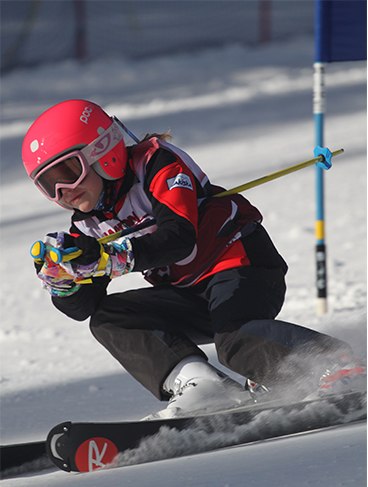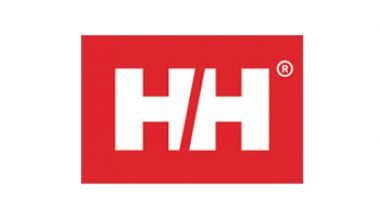Learn to Train
LEARN THE SPORT
Raising active ski racers in today's busy world can be challenging as ski racers become more involved in the sport of ski racing. Family time and being engaged with your ski racer at this stage assists with creating the habit to be physically active for life. Maintaining a balanced family life that fosters the development of healthy habits is important.
- Boys 9 -12
- Girls 8 - 11
- Club Level
- Local & Zone racing
- Limited provincial racing
- Stage ends with start of adolescent growth period

Sleep Recommendations
A ski racers total sleep requirement is the key to the foundation of post-exercise recovery and regeneration (PERR). The lack of sleep or cumulative sleep debt is associated with changes in mood, concentration, motivation, endurance and recovery this can hurt performance and put the ski racer at risk for overtraining/under-recovery.
Duration
9.5 to 10 hours per day.
+30-minute nap between 2 pm and 4 pm
Quality
- Maintain a regular sleep/nap routine.
- Ensure a comfortable sleep environment.
- Observe sleep for sleep disorders.
Phase
- Maintain neutral sleep pattern; aim to consistently go to bed and wake up at the same time every day.
- Get early morning light exposure for 30 minutes daily.
- Maintain regular nutritional intake routines (breakfast is the most important meal of the day).
Key Points
- Maintain 15 - 30-minute bedtime routine.
- Avoid stimulation 1 to 2 hours before bed, limit and control "screen time."
- Monitor caffeine intake.
Regeneration
The use of a simple evaluation at the end of each day can be included as part of the bedtime routine of young ski racers and is used to measure the level of enjoyment, level of energy expenditure, stress levels, self-esteem, quality of sleep, illness and injury. At this stage, the number of variables monitored increases in coordination with their increased cognitive abilities.
Coaches should check in with their ski racers at the start of each training session to ensure their ski racers are well-rested, hydrated and fueled for the training and competition bout scheduled.
Parents should have a light snack and water available at the end of the training session to refuel.
Creation of post-ski day routines can aid young ski racers in the development of a relaxation and regeneration routine in preparation for a good nights sleep. The recovery routine should include a short, active recovery exercise along with some light stretching.
Sleep logs can be used to determine current behaviours and evaluated with the intent to develop training and recovery routines to match the sleep requirement.
Strategies for getting enough sleep include napping.
Nutrition
A well-fueled ski racer will have the nutrients and energy they need to grow and participate in ski racing.
Here's an example of what ski racers at this stage should aim to intake, but it's most important to find out what foods your ski racer needs explicitly to function and perform at their best.
- Five - six servings of vegetables and fruit (i.e., one apple = 1 serving)
- Four - six servings of grain products (i.e., 250mL brown rice = 2 servings)
- Two - four servings of milk and alternatives (i.e., 250mL milk = 1 serving)
- Two servings of meat and alternatives (i.e., 75g lean beef = 1 serving)
- Intake a small amount of fat
- Drink water
STEPS TO HEALTHY EATING
Eat meals as a family and use Canada's Food Guide to help you plan healthy meals that the family can eat together.
Plan and pack healthy meals and snacks to take to the ski hill to eat after skiing.
Ski racers need to hydrate and refuel as soon as possible after skiing with a snack and eat a complete meal no later than two hours after the end of the training session has ended.
Planning meals ahead of time helps to ensure you have all the ingredients to prepare a healthy meal in your allotted time frame. Busy schedules make it essential to plan healthy meals.
Trust your young ski racer's appetite. Trust that your young ski racer knows how much they need to eat.
Encourage young ski racers to listen and respond to their signals of hunger and fullness. During growth spurts, young ski racer's may eat more. When they are growing slowly, they may eat less.
Create an environment that supports healthy eating and encourage young ski racers to become more aware of their hydration and water intake. Cold climates can be just as dehydrating as hot and dry climates. Young ski racers should be encouraged to drink slightly sweetened tea or warm Gatorade from a thermos, Gatorade should be mixed with 1/2 water and 1/2 Gatorade to reduce excess sugar intake while still providing a beverage that will aid in hydration and electrolyte replacement.
Resources:
Health Canada - Canada's Food Guide
Dieticians of Canada Raising Healthy Kids
Raising Our Healthy Kids is a series of short 60 – 90-second videos providing information to parents and care providers on healthy growth and development of children up to 12 years of age.
INJURY PREVENTION
Ski racers can prevent most injuries by being physically fit and literate, and by wearing the appropriate and adequately adjusted equipment for the activity including skiing.
Many common factors can pre-dispose a skier to injury.
- Skiing while fatigued and not taking enough breaks for rest or stopping when tired. Breaks do not need to be long in duration at the Learn to Train but should be intermittent during the training day.
- Skiing outside of the appropriate level of challenge and comfort zone of the skier. The level of challenge is dependent on the skier’s current technical and physical capabilities or inabilities. Exposing skiers to activities significantly higher than their abilities can result in frustration, failure, a decline in motivation, and possible injury.
- Skiers should be well rested, hydrated and fueled before arriving at training. Proper hydration and nutrition throughout the day will decrease the risk of injury.
- Changing snow conditions can affect young skiers. Check in frequently to see how they feel about the terrain and snow conditions.
Prevent injuries by participating in well-planned training sessions led by professional coaches or instructors that include the following:
- The proper introduction to the activity and skills ahead of the training session.
- A warm-up that includes supervised physical fitness movement preparation.
- Well, planned skill progression is matching the skill and development age of the skier.
- A proper cool down.
- Conclusion.
Prevent injuries with adequately adjusted ski equipment. Poorly functioning, poorly fitting, or improperly adjusted equipment can cause more harm than good. Preventative equipment such as helmets can prevent head injuries.
Coaches and parents play an essential role in educating young skiers about safe skiing practices. Understanding, demonstrating and teaching the alpine skier responsibility code to young skiers can help to avoid accidents.
Young skiers can become cold quickly; it's best to dress skiers in layers and take frequent short breaks. Check-in with the skier to ensure they are warm throughout the day. Hand warmers, food snacks, and hot chocolate help to keep young skiers warm and happy when skiing.
Resources:
Maintaining Balance
Raising active ski racers in today's busy world can be challenging. Family time and being engaged with your ski racer at this stage assists with creating the habit to be physically active for life. Allowing for unstructured play both on and off the ski hill promotes creativity, self-discovery and decision making.
Maintaining a balanced family life that fosters the development of healthy habits includes:
- Scheduling family time and activities where the family can be active together.
- Ensure that everyone in the family has time for rest and regeneration.
- Find a balance between school, sports, and encourage multisport exposure. Working in partnership with your young ski racer develop a simple monitoring routine to assist ski racers with their recovery between training and competition bouts.
- Allow for social "play" time with other ski racers and friends in an unstructured environment like the park playground or ski area.
- When ski racers begin to participate in a more structured sports program, parents should become involved through volunteer activities at their ski racer's local club.


